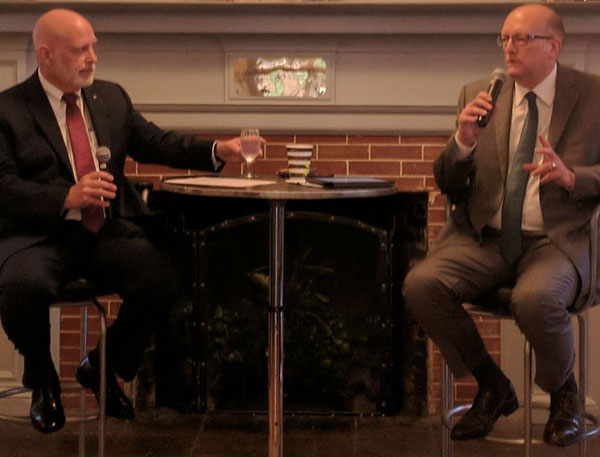During today’s Boardroom Breakfast, held at the Red Cross Building on Fort Vancouver, attendees were able to hear from Stevan Bobb, executive vice president and chief marketing officer for BNSF Railway.
Here are 10 things those who attended the breakfast learned from the discussion:
- BNSF has been transporting goods over rail for more than 160 years.
- BNSF Railway currently has rail lines in 28 states and three Canadian Provinces.
- The top commodities in order of volume transported by BNSF are intermodal, which includes consumer goods, comprising about 50 percent of their business; industrial goods; agriculture-related products; coal. In Washington state the bulk of the freight is grain and other agricultural goods.
- The railroads in the U.S. have more than 140,000 miles of track, including the short lines serving only local and regional markets. Of that BNSF has roughly 32,500 miles of track.
- BNSF uses high speed cameras and other hi-tech monitoring devices to provide safety checks of the rails and railcars on their system.
- Of the railcars BNSF moves on their lines, approximately 50 percent of those cars are owned by BNSF and the others are typically owned by their freight customers.
- The access to oil in the Bakken fields of the upper mid-west gave BNSF the demand to increase capacity along its line which has been an advantage to many of their customers.
- BNSF recently created an intermodal line between the Pacific Northwest and Texas allowing for the cost efficient transport of lumber containers into the Texas market.
- BNSF employs 3,700 people throughout the state of Washington and 40,000 throughout its system.
- Typically two people are all the crew that is required of a unit train that could be as much as a mile long, made possible by maintenance crews stationed along the line. BNSF has two crews on all of its trains – an engineer and a conductor. The train crews ride in the lead locomotive. Maintenance crews and other BNSF ground personnel assist train crews as responders.




